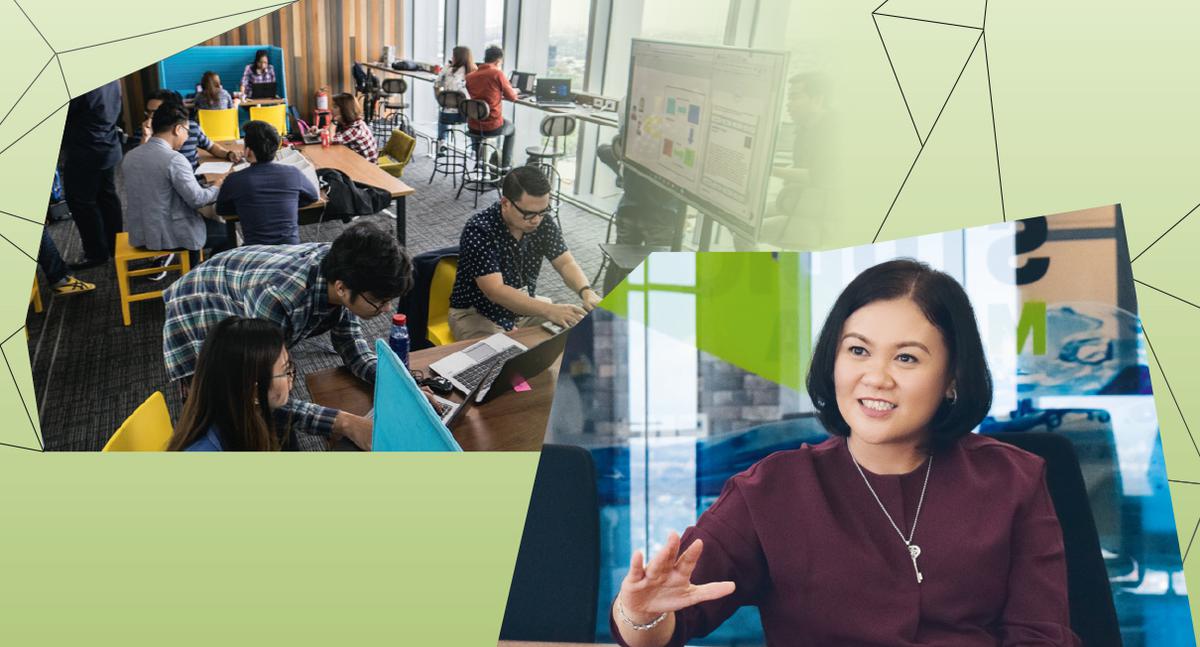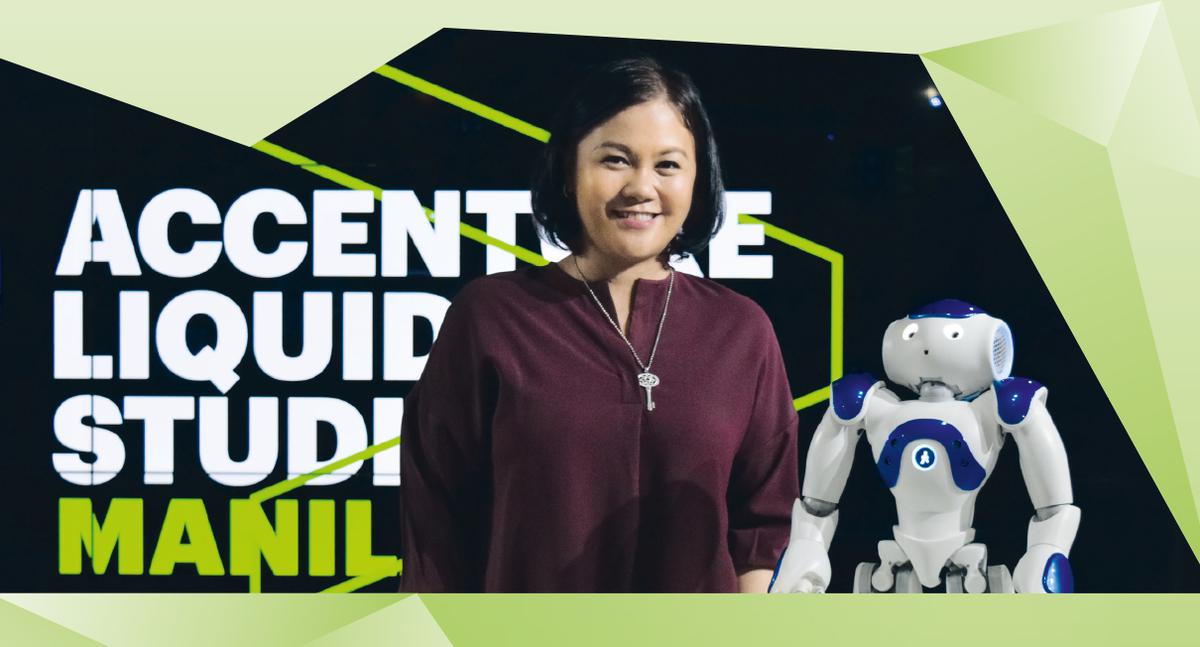In the midst of all her success and leadership roles, Ambe Tierro exuded a humble demeanor and a pleasant presence that matched her professionalism—a rarity in today’s top-ranked leaders. We were very much interested to know Tierro’s insights in AI and its expansive and groundbreaking impact in the IT industry. Here, we take a look at Tierro’s journey that led her to wear a global hat and her passion in advocating for lifelong learning.
It is 2017 and despite progressive movements in the IT industry, it has yet to diversify and explore more of women’s talent and potential. That said, Tierro is a gem in the information technology industry and is living proof that women can indeed lead in an arena dominated by men. We need more women like her in the IT industry, here’s why:
Of humble beginnings, the journey of Tierro began with her interest in technology. To fuel this interest and burning desire to immerse in a fairly uncommon territory at that time, she enrolled in the computer science program of De La Salle University. Back then, Tierro shares, things were immensely different—the programming language used was the now historic Cobol language. Despite defending a thesis that dealt with a subset of artificial intelligence, there was a scarcity in the area of actual application, especially in the use of technology in business operations and strategy execution.
Straight out of college, Tierro joined Accenture as an entry level programmer. Through hard work and dedication, she rose up the ranks. At 25, she became the youngest manager in Accenture at that time. Her success and passion further moved her up the organization, becoming managing director in 2002. For 15 years now, she has continued her senior executive role, with responsibilities spanning global markets.
Things are almost entirely different now, with the IT industry taking leaps and bounds over the past years. With 27 years in Accenture, Tierro has been playing a significant role in charting and ensuring Accenture’s growth and industry leadership in the Philippines. On top of her role as Technology Lead in the Philippines, Tierro is at the helm of scaling up Accenture’s Artificial Intelligence (AI) services as its global delivery and capability lead. A first in the history of Accenture leaders in the Philippines, Tierro’s recent appointment underscores the caliber of homegrown yet world-class talent and expertise in the Philippines. As the AI global lead, Tierro drives Accenture’s AI agenda, working with the company’s technology and leadership teams in developing and industrializing AI architectures and capabilities to scale up AI technologies across industries. By doing so, Accenture creates new opportunities through AI to help clients in navigating their digital transformation journey. Tierro’s many roles entail her to execute key programs necessary for Accenture’s innovation-led growth in the Philippines. As the technology lead, she is responsible for operations, strategy development and execution, delivery and capability development for the Philippines delivery center.
Advocacy for giving back and pushing boundaries for women
Rallying the push to develop a more diverse talent pool, Tierro has been a staunch advocate for an interdisciplinary and applied approach in STEM (science, technology, engineering and mathematics) education. She has made it her mission to help kids learn coding early. For the past three years, she has personally hosted Accenture’s “Hour of Code” sessions and has likewise taught programming to select grade school students. Spearheaded by Code.org and supported by Accenture worldwide during Computer Science Week, “Hour of Code” is one of the programs that Tierro strongly supports, as it gives her the opportunity to connect with the youth and instill in them the value and impact of technology in our world.
Tierro shares that the program is a fun way to learn about coding. Instead of just letting kids play games, “Hour of Code” allows them to create their own versions of it. For her, every opportunity that she undertakes to teach kids how to code channels her passion for lifelong learning. “It is important to continue learning if you want to thrive and succeed in the technology industry, since trends are always changing,” says Tierro. To this point, Tierro also underscores the importance of strong support from teachers who can help spark the students’ interest in STEM education early on. “To have the right talent pool, there needs to be an interest in computers and what they are capable of, fluency in coding and willingness to enhance people’s skills as technologies evolve.”
Another advocacy that is close to Tierro’s heart is pushing for women to be in technology. She has witnessed the challenges of being underrepresented in the IT industry. In many cases, she shares, she was the only woman in global meetings or in the boardroom. That certain underrepresentation has implications in terms of the motivation of women. “The more we encourage girls and women, the better. It is not only the right thing to do, but it makes business sense. More than half of the population are women and this means that there’s a lot of untapped potential for talent,” Tierro shares. Women, according to Tierro, are integral to a company’s success. Existing data and research have shown that diverse teams are more creative and productive and that clients now are also looking for diversity. “It makes business sense to have a balanced leadership and a balanced workforce,” she adds.
AI: the future of technology
AI is one of the trending topics in the technology space today. As one of the leaders driving opportunities for the betterment of AI technology, we asked Ambe for her insights on where AI technology is now and where it is heading.

Ambe shares that globally, AI-driven initiatives have become even more prevalent. A few examples include virtual agents merged with AI technology that can act as a company’s spokesperson or applying machine learning to systems to help detect patterns and issues that in turn, develop a system’s capacity for self-healing. Consequently, investments on machine learning are also paving the way for automation. To this, Ambe is optimistic and sees possibilities ahead for AI to enable people to enrich their lives and empower them to do more. She shares that it is ultimately about creating new opportunities for better and meaningful jobs and elevating talent to higher-value work. Back then, she shares, there was no heavy demand for data engineers and data architects. Now, with the growing interest for automation, there’s also a spike in demand for these careers. The key, Ambe shares, is to be able to recognize that skill levels will definitely be different and that new skills will be required. She continues by saying that AI, simply put, is teaching a machine to sense, comprehend, act, and learn. Those four things are meant to mimic human intelligence to complement and simplify work, enabling people to create meaningful value and impact at work.
To take automation and AI to new heights, AI initiatives within Accenture now consist of integrating the technology in its training efforts. Focusing on upskilling employees has allowed a smooth implementation of AI. Ambe is confident that by infusing AI and other emerging technologies into work, processes can be more efficient and accurate.
For Tierro, the three biggest things that AI has done so far is being able to improve the quality of human interaction, increase service availability to 24/7 and enhance advisories (all thanks to the ability of AI to learn and comprehend).
We asked her where she thinks AI will be in the next 10 to 15 years. She said that it’s too long of a duration and that developments would happen sooner. In three to five years, she sees AI becoming more pervasive and human productivity reaching levels we haven’t seen before.
Also published in GADGETS MAGAZINE October 2017 Issue
Words by Gerry Gaviola
